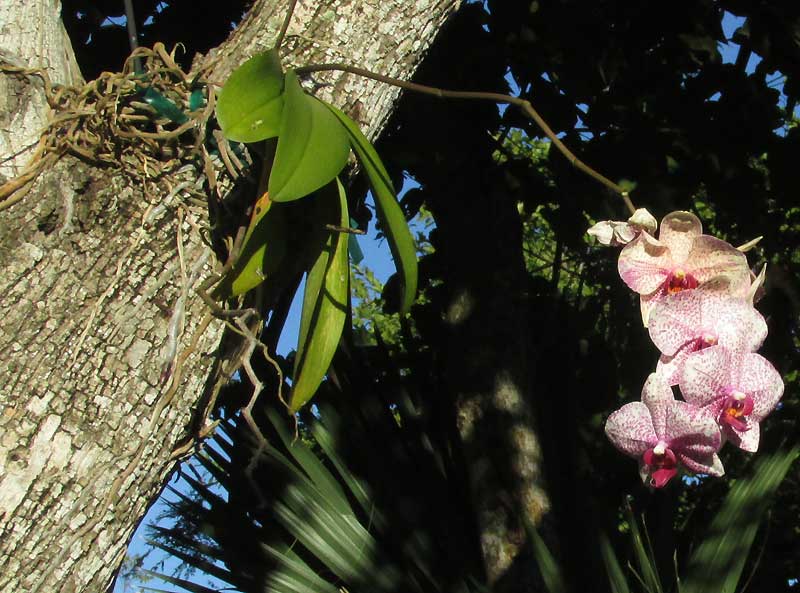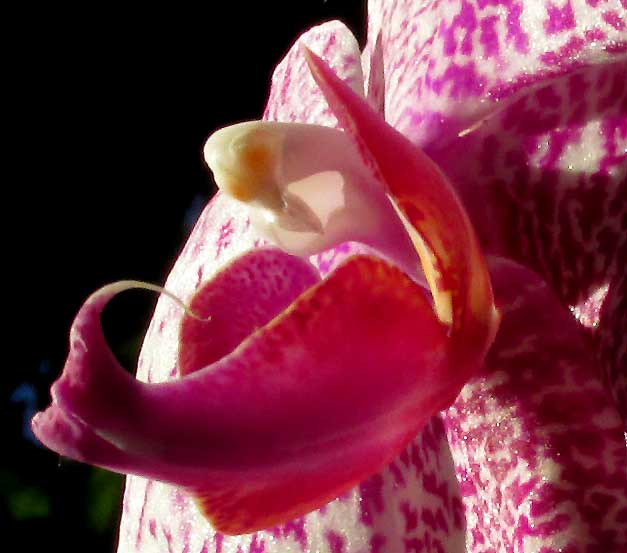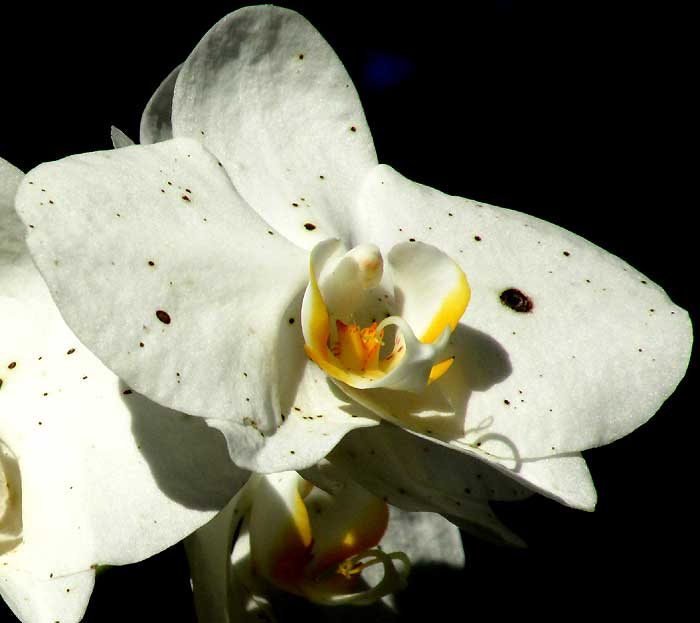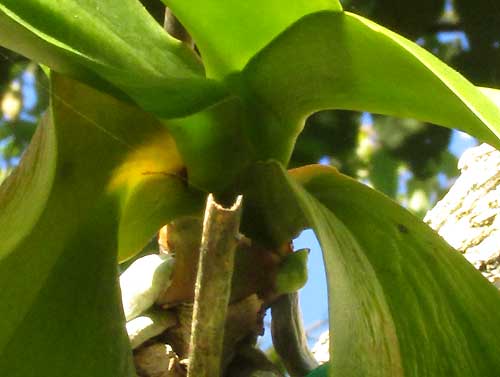Excerpts from Jim Conrad's
Naturalist Newsletter
Entry issued on December 8, 2019, from the forest just west of Tepakán; elev. ~9m (~30 ft), N21.053°, W89.052°; north-central Yucatán state, MÉXICO
PHALAENOPSIS ORCHID
Several foreigners have taken up residence in Tepakán and normally their backyards display ornamental tropical plants. This week during a visit to one of these backyards I saw the orchid shown below.

Here's a close-up of a blossom's central sexual parts:

These pictures match Internet pictures labeled as "Cymbidium hybrids," and when I posted one as such on Facebook, a reader quickly came forward suggesting that it was a Phalaenopsis. And now I found more Phalaenopsis pictures looking like our plants than Cybmidium species. Well, that's what comes of trying to ID plants by pictures on the Internet, especially hybrids with merging features. In my friend's backyard another orchid was in every way like the one shown above, except its flowers were white, a blossom of which is shown below:

In Orchid identification it's always important to notice whether the leaves arise from atop "pseudobulbs," which usually look something like green eggs or spindles placed between the stem and leaf bases. I couldn't see pseudobulbs on this species. I read that Phalaenopsis orchids possess short, leafy stems, and that's what you see below:

Phalaenopsis orchids often are known in English as moth orchids, and the genus embraces about 70 species native to Asia and Australia and surrounding islands. The name Phalaenopsis is derived from the Latin phalaina meaning "a kind of moth." The -opsis part means "having the appearance of.".